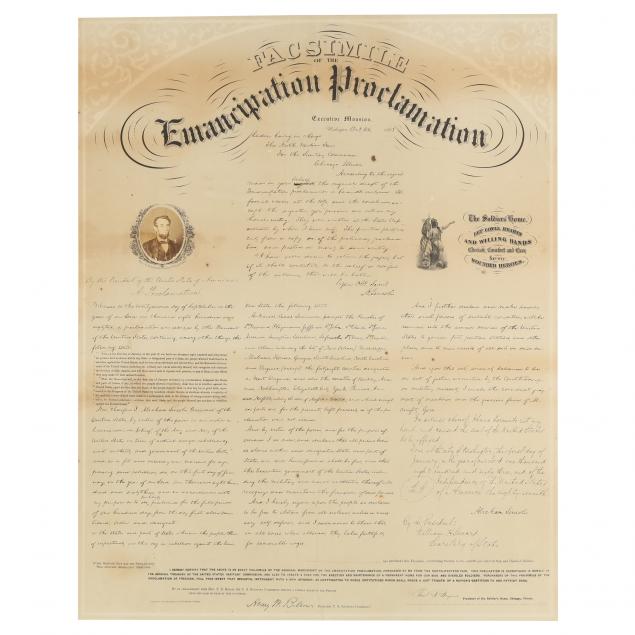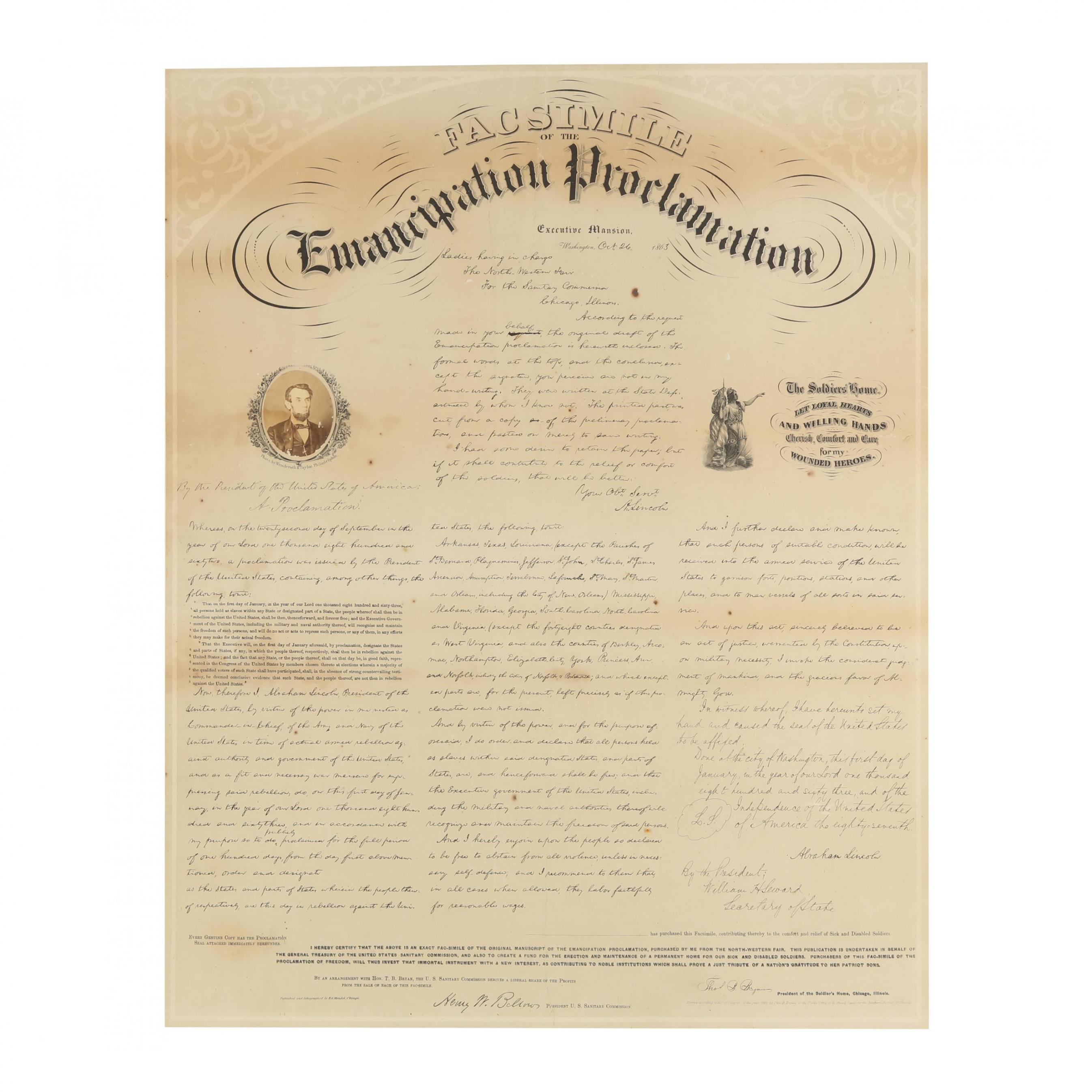
The lithograph facsimile of Abraham Lincoln's handwritten Emancipation Proclamation that was offered in our Signature Fall Auction is at the crossroads of several disparate chapters of American history.
When Fort Sumter fell to the Confederacy in April of 1861, it took women on the Union home front less than two weeks to mobilize aid for the medical care and support of their soldiers. But the best of intentions only go so far without funds, and so creative Union philanthropists began to look in all directions to raise money for the food, clothing, and medical supplies needed for the war effort. And of course, who wouldn't want to buy a rare copy of one of the most important documents in our country's history? Follow along below to find out how Lincoln's Emancipation Proclamation cropped up during and after the war in more ways than one.
When Fort Sumter fell to the Confederacy in April of 1861, it took women on the Union home front less than two weeks to mobilize aid for the medical care and support of their soldiers. But the best of intentions only go so far without funds, and so creative Union philanthropists began to look in all directions to raise money for the food, clothing, and medical supplies needed for the war effort. And of course, who wouldn't want to buy a rare copy of one of the most important documents in our country's history? Follow along below to find out how Lincoln's Emancipation Proclamation cropped up during and after the war in more ways than one.
1. The United States Sanitary Commission
The women who first rushed into the fray of the wartime supply chain were Elizabeth Blackwell (the first woman in the United States to earn a medical degree) and her sister Emily of New York. After Fort Sumter, they invited wealthy New York families to organize the Women's Central Relief Association of New York. Of course, it didn't take long for men to take over. When the male officers of the WCRA were dispatched to Washington to figure out how best to coordinate their efforts with the federal government, they instead simply decided to pivot the group to what would be called The United States Sanitary Commission, with executive members such as Frederick Law Olmsted and Dr. William Van Buren.
As the war churned on, chapters of the United States Sanitary Commission cropped up in major cities throughout the North. The Chicago chapter, known as the Northwestern Branch, was created in October 1861.
As the war churned on, chapters of the United States Sanitary Commission cropped up in major cities throughout the North. The Chicago chapter, known as the Northwestern Branch, was created in October 1861.
2. Philanthropic Fundraising
The work of the USSC was mammoth. Mary Livermore, one of the directors of the Northwestern branch, wrote "Here we packed and shipped to the hospitals or battle-field 77,660 packages of sanitary supplies, whose cash value was $1,056,192.16. Here were written and mailed letters by the ten thousand, circulars by the hundred thousand, monthly bulletins and reports. Here were planned visits to the aid societies, trips to the army, methods of raising money and supplies, systems of relief for soldiers’ families and white refugees, Homes and Rests for destitute and enfeebled soldiers, and the details of mammoth sanitary fairs." And the USSC, unlike some other aid organizations, paid its employees.
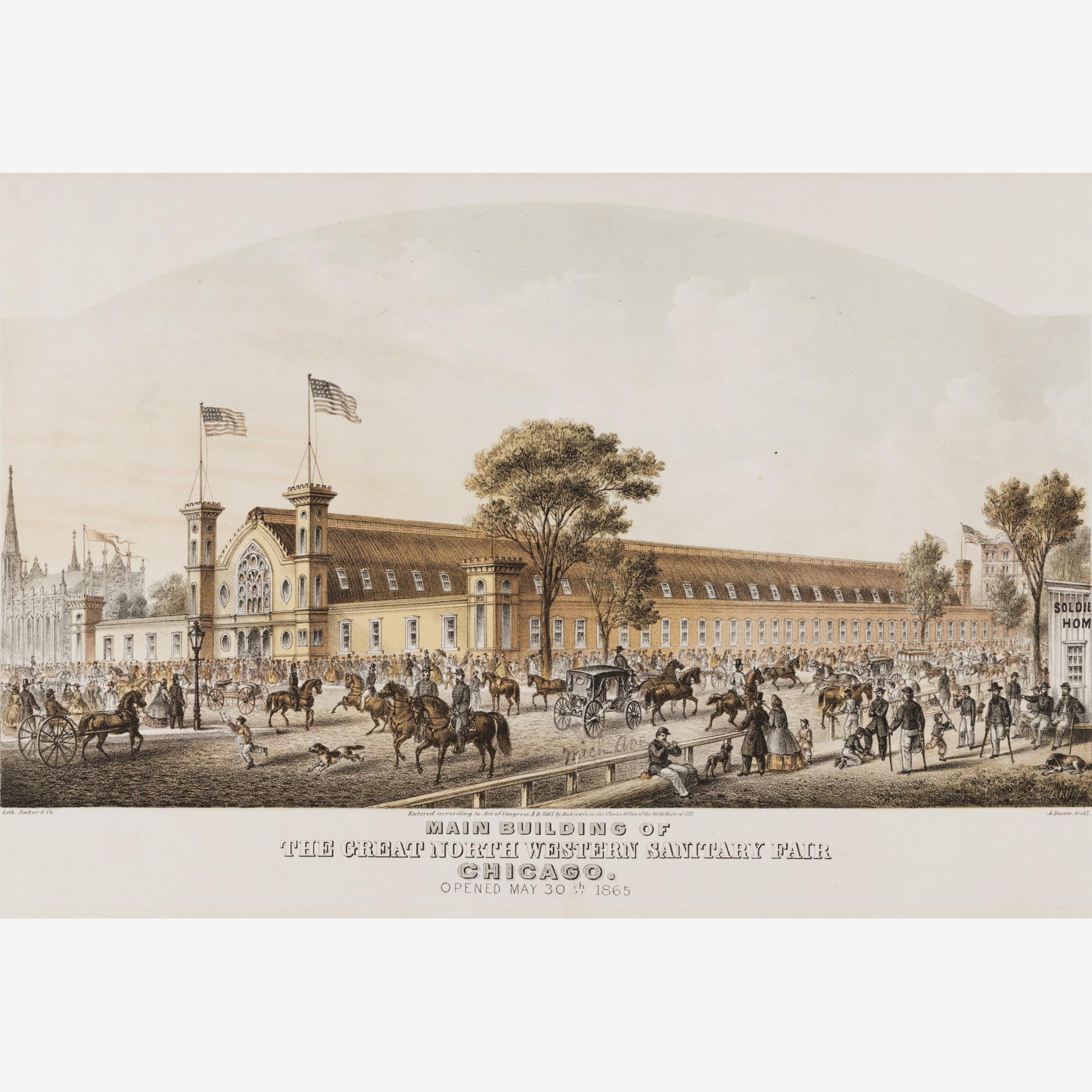
In order to fund all of these operations, the various USSC branches began to hold "Sanitary Fairs," modeled on the first of the World Fairs and Exhibitions, complete with great halls built specially for the occasion. The first of these, organized by Mary Livermore and her co-director Jane Hoge, was held in Chicago in 1863. They hoped to raise $25,000, and instead raised $86,000. Other cities took note, and subsequent fairs were held by the other USSC branches, and a second fair in Chicago in 1865.
3. Lincoln Donates
One of the main goals of the Great Northwestern Fair of 1863 was to raise money to build a "Soldier's Home" in Chicago. Hoge and Livermore, creative fundraisers as well as master organizers, wrote to Abraham Lincoln, requesting that he donate his original draft of the newly issued Emancipation Proclamation to raise money to build the home. Their plan was to take up a subscription from the public to buy the document for the Chicago Historical Society. Lincoln's response (which is transcribed at the top of the facsimile in our sale) read "According to the request made in your behalf, the original draft of the Emancipation Proclamation is herewith inclosed [sic]. The formal words at the top and the conclusion, except the signature, you perceive, are not in my handwriting. They were written at the State Department. The printed part was cut from the preliminary Proclamation and pasted on merely to save writing. I had some desire to retain the paper, but if it shall contribute to the relief or comfort of the soldiers, that will be better. Your Obedient Servant, A. Lincoln”
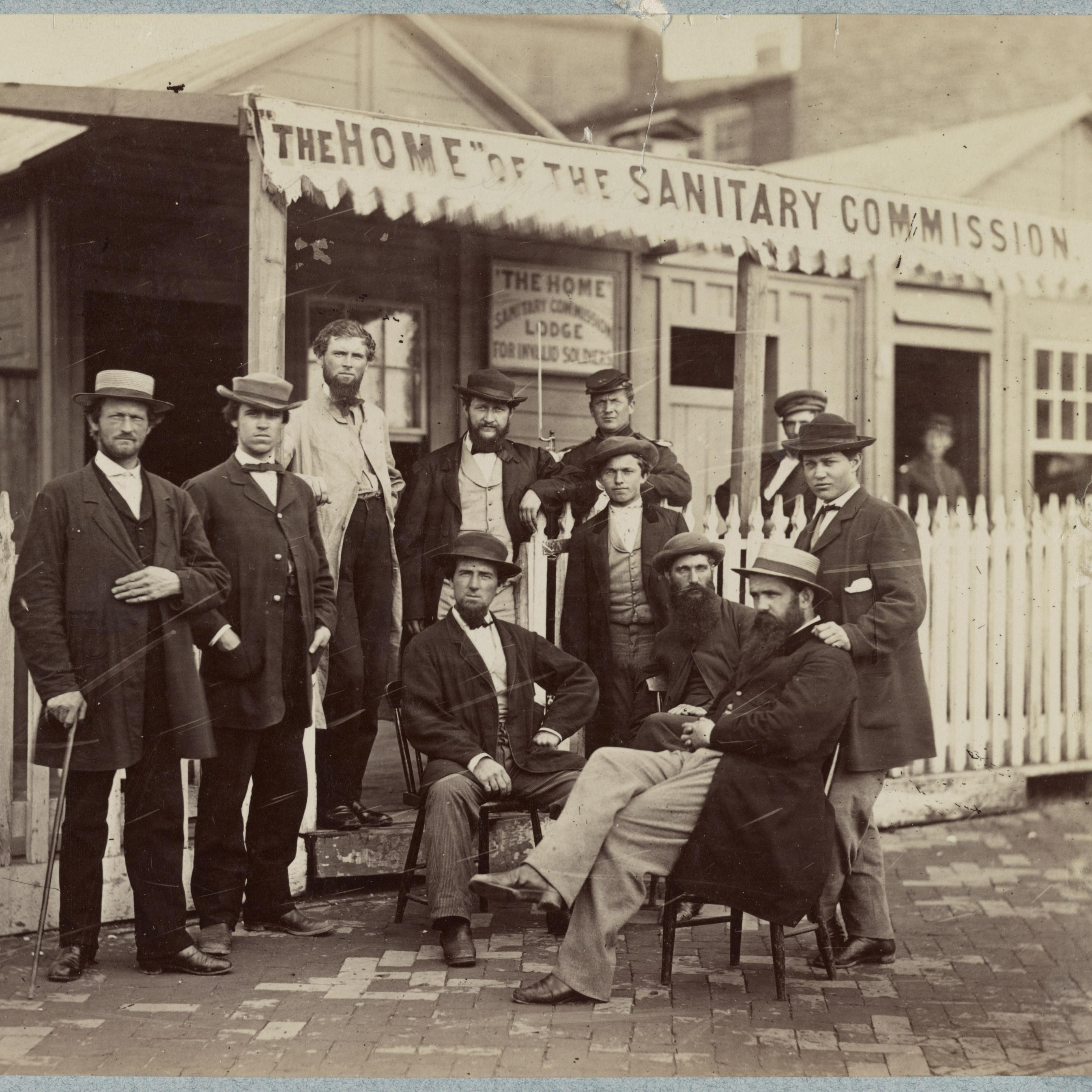
A USSC "Soldier's Home"
Recognizing the fundraising potential of such an important donation, the president of The Soldier's Home, Thomas B. Bryan, engaged Chicago's premier lithographer, Edward Mendel, to make copies of the Emancipation Proclamation that would be sold at the Fair. Again, the facsimiles were so successful that Lincoln signed another 48 copies to be sold at the 1864 Sanitary Fair in Philadelphia. This proved to be incredibly fortuitous for posterity, as future disaster impended, even after the war was over.
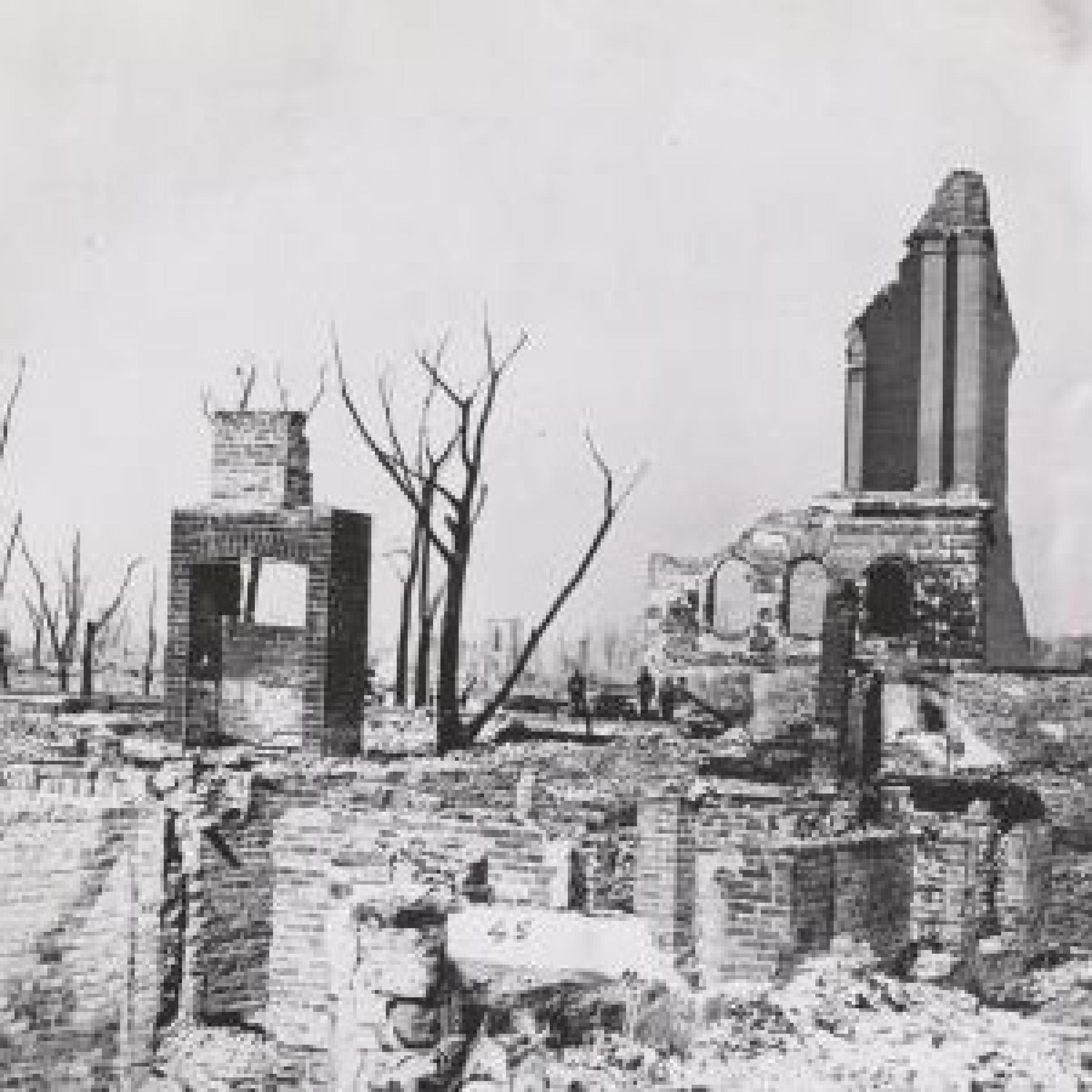
The ruins of the Chicago Historical Society after The Great Fire of 1871
4. The Fire
Once the handwritten draft of the Emancipation Proclamation had been secured, the funds raised, the war won, and Lincoln assassinated, the document became an even more precious artifact. It was framed and hung on display at the Chicago Historical Society. But in 1871, Mrs. O'Leary's famous cow kicked over a lantern, and 4 miles of city burned down, leaving 100,000 Chicagoans homeless.
Two of the casualties of the fire: The Chicago Historical Society and the original Emancipation Proclamation. Samuel Stone, the curator of the Society's collection, made an heroic attempt to save the Proclamation. In his own words: “.....the frame was so stout it was not easily done, and just as I was making the attempt, there came another blast of fire and smoke, filling the whole heavens and frightfully dashing firebrands against the reception room window. … Believing that a minute more in trying to save the Proclamation, would make it too late for my escape, I made for the basement door.” And so the copies of the Proclamation made to raise funds during the war became the only record of Lincoln's draft.
5. The Suffragettes
It's not hard to imagine that the women who took on the gargantuan task of organizing aid to the Union Army were not so easily relegated back to their needlework once the war was over. Many of the women who worked as nurses and administrators for the USSC and its branches became instrumental in the fight for women's voting rights. Mary Livermore, of the Northwestern branch, noted that "during the war, and as the result of my own observations, I became aware that a large portion of the nation's work was badly done, or not done at all, because woman was not recognized as a factor in the political world." Livermore became the President of the Illinois Woman Suffrage Association, and founded The Agitator, a suffragist newspaper. Not for the last time in history, the wartime mobilization of women's talents led to their increased involvement in the public sphere.


